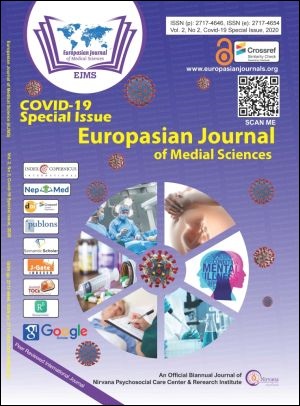Assessment of COVID-19 Preparedness on Obstetrics and Gynecology Practices in Nepal
Keywords:
Coronavirus, COVID-19 Pandemic, Gynecology, Obstetrics, Contagious DiseasesAbstract
Background: The Corona Virus Disease (COVID-19) is an infectious disease caused by SARS-CoV-2 virus. The Coronavirus transmitted between people through direct contact with infected people and indirect contact with infected surface and object. The practicing Doctor is at more risk of infection with COVID-19. The WHO declared the Coronavirus infection as a pandemic on March 11, 2020. COVID-19 pandemic is disrupting health services worldwide. The objective of this study was to assess COVID-19 preparedness on Obstetrics and Gynecology practices in Nepal.
Methods: We conducted a web-based cross-sectional study from 5 July to 20 July 2020. We collected 136 responses from Obstetrics and Gynecology consultants practicing at different hospitals of Nepal through google forms. Data were analyzed by using SPSS version 22.
Results: Among 136 Obstetrics and Gynecology Consultants, most of participants were spacing ANC visits for low-risk pregnancy (86%), refer patients to Corona Centre if suspected of coronavirus infection (72.8 %), did not ask their patients for COVID-19 test before any procedures (69.04%) and triage and risk screening for COVID-19 for each patient (69.1 %). Proper personal protective measure was not available in most of the centers. Most of the centers has working guidelines for COVID-19. Most of the routine activities were resumed by most of the participants. Most of the hospitals had isolation wards (71.3 %) but most hospitals didn’t have isolated Labour rooms (61.8 %) and isolated operation theatres (62.5%). Only a few participants (15.4%) had received specific training regarding COVID-19.
Conclusion: Proper personal protective equipment was available in few centers and very few participants had received special training for COVID-19. Most of the hospitals had working guidelines for COVID-19. Most participants didn’t test their patients for COVID-19 before any surgical procedures. Most of the participants follow the proper protective measures during practice.
Downloads
Downloads
Published
How to Cite
Issue
Section
License
Copyright (c) 2020 Raj Deb Mahato

This work is licensed under a Creative Commons Attribution 4.0 International License.
The author(s) retain the ownership of the copyrights for their work published in EJMS without any restrictions. Upon submission, the author(s) grants EJMS a license to publish, including to display, store, copy, and reuse the published content.
License to Publish
By submitting a manuscript to EJMS, the author(s) grant the journal a non-exclusive license to:
- Publish and distribute the content in all formats, media, and platforms (both existing and future), while identifying EJMS as the original publisher.
- Reproduce, display, and store the content in both print and online formats, including institutional and digital repositories.
- Translate, adapt, and summarize the work, including reprints, extracts, and abstracts.
- Develop derivative works based on the original content.
- Include the work in electronic databases and provide links to third-party materials.
Creative Commons Licensing
In addition to EJMS’s publishing rights, authors grant third parties the right to use, share, and distribute their work under the Creative Commons Attribution 4.0 (CC BY 4.0) International License. This allows unrestricted use of the content, provided proper attribution is given to the original author(s) and the journal.

